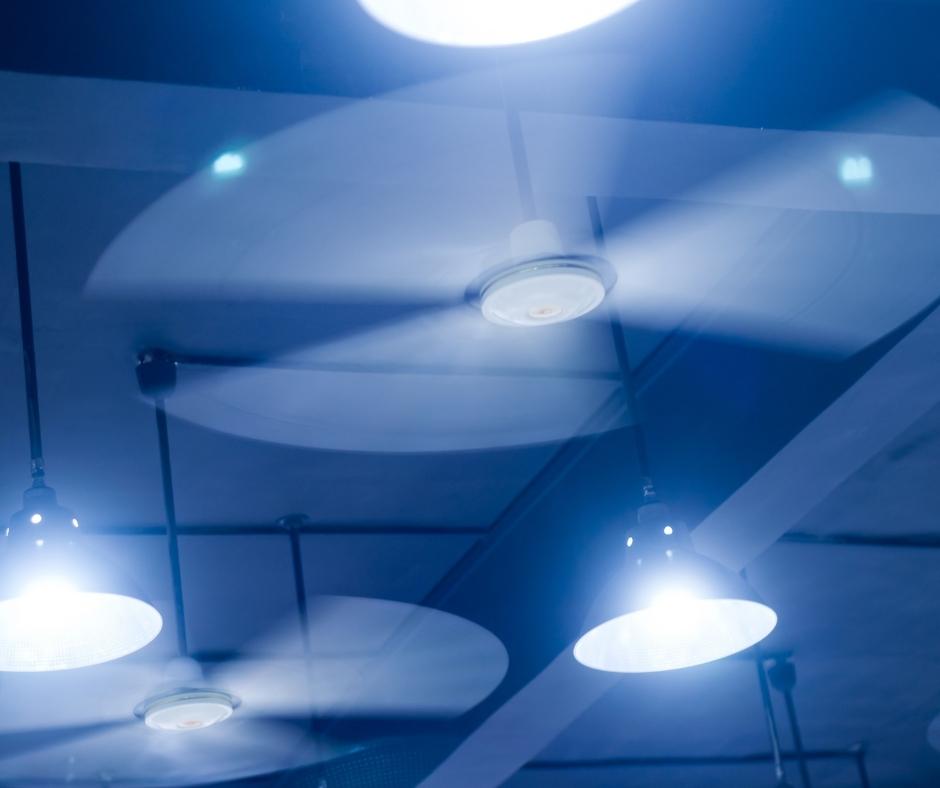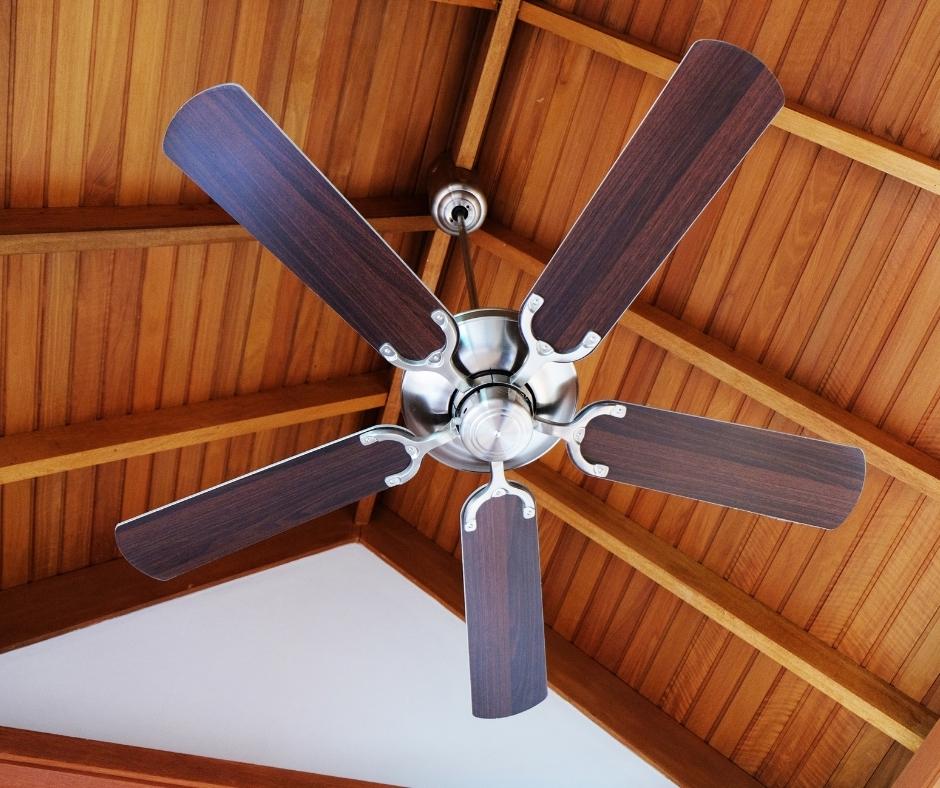If you’re looking for ceiling fans, you might come across AC and DC models. You’ll probably wonder what each has to offer, and which is the best option for you.
AC stands for alternating current, which is the standard way that electricity is sent from power stations to homes because it is more efficient. DC stands for direct current, which is typically how appliances are powered because it is more consistent and safer.
We researched the strengths of both styles of fans and put together this article to help you understand which is the right choice for your home.
In This Article We'll Discuss
AC vs DC Motor Ceiling Fans: Pros and Cons

Traditionally, ceiling fans have used alternating current as their power source. They don’t have complicated circuits and don’t have electronics that wear out more quickly during pauses created by the electric wave changing directions.
Direct current fans are a relatively new thing. They come with a transformer that converts AC to DC, which powers the fan.
Here are some pros and cons for both styles:
AC pros: If you’re just looking for a cheap fan, AC fans are the most affordable because the technology has been around for a long time. That also means that customer support is more readily available, and servicing them is more affordable.
You can also operate most AC fans with a wall switch or a pull cord. So, you don’t need to worry about losing the remote or the batteries dying.
DC pros: Electronics depend on a consistent flow of electricity. That means direct current electricity. So, if you want the latest electronic gadget, you’ll probably want a DC ceiling fan. This also means they connect via remote controls, so you can turn it on and off while sitting down.
Since the electricity is consistent, they also get to the speed you want more quickly. In addition, they offer better reverse flow so you can use them to spread heat during winter, and they offer a greater variety of speeds.
People are also really drawn to them because they are also more efficient in how they use electricity. AC is the preferred way to move current from power plants to homes because there is less loss, but DC is the most efficient when operating appliances.
AC cons: Since the technology is older and less refined, AC ceiling fans use a little more electricity than DC fans. However, they are still easier on your utility bills than air conditioners.
The motors are also less responsive to changes, so they are slower to get to maximum speed and have fewer speed options. In addition, you also can’t control them with a remote, so you’ll need to get up and either pull a chain or use a wall switch.
They are also noisier than DC fans.
DC cons: The biggest drawback to DC fans is the investment. They are expensive compared to AC fans, and the small overall difference in efficiency means it’ll take a long time to recoup that upfront cost through smaller utility bills.
They are also associated with higher-end technology, which is great if you want a lot of options for speed and fan direction. It also means it has more components to wear out and, since the technology is new, getting them serviced could be a chore.
DC Fan vs AC Fan Power Consumption

It’s important to note that both kinds of fans are much more efficient than air conditioners. Using a ceiling fan of either design will use less electricity.
Compared to each other, however, DC fans use a lot less electricity than AC fans. That’s because the electricity is more consistent and it doesn’t change direction all the time. Some DC fans are as much as 70 percent more efficient than AC fans.
Are AC or DC Motor Ceiling Fans Better?
In most respects, new technologies will offer superior performance. But, the question of which one is best is a subjective one.
DC fans, which are newer, offer more options in speed and blade direction, and they are faster to hit peak speeds. They are also more efficient than AC fans and most are controlled by remote control. So, there is no need to stand up to pull a chain or flip a wall switch.
If you just want something cheap, an AC fan is a good choice. Their technology is older, which means they are less expensive and are easier to get serviced. There are also fewer components, so they tend to last longer.
In terms of overall value, that makes them a great option.
Which Type of Ceiling Fan Motor is Quieter?
Newer technologies tend to come with plenty of advantages and one of those for DC fans is that they are quieter.
The advantage comes from the fan technology itself. DC fans use a different kind of motor, which is not only much more efficient than an AC fan but it’s also quieter when in use.
Conclusion

Direct Current fans are new technology, which brings with them a lot of strengths. They are more efficient, quieter, and offer a lot of options when it comes to speed and fan direction. They also get up to speed more quickly. However, they are more expensive.
Alternating current fans are cheaper and have fewer components to wear out. In addition, they are easier to service if something breaks. However, they’re noisier and require that you control them from a chain or switch.
We hope you found this article helpful. If you did, we’d love to hear about it in a comment down below. You can also share a link on your social media networks.

